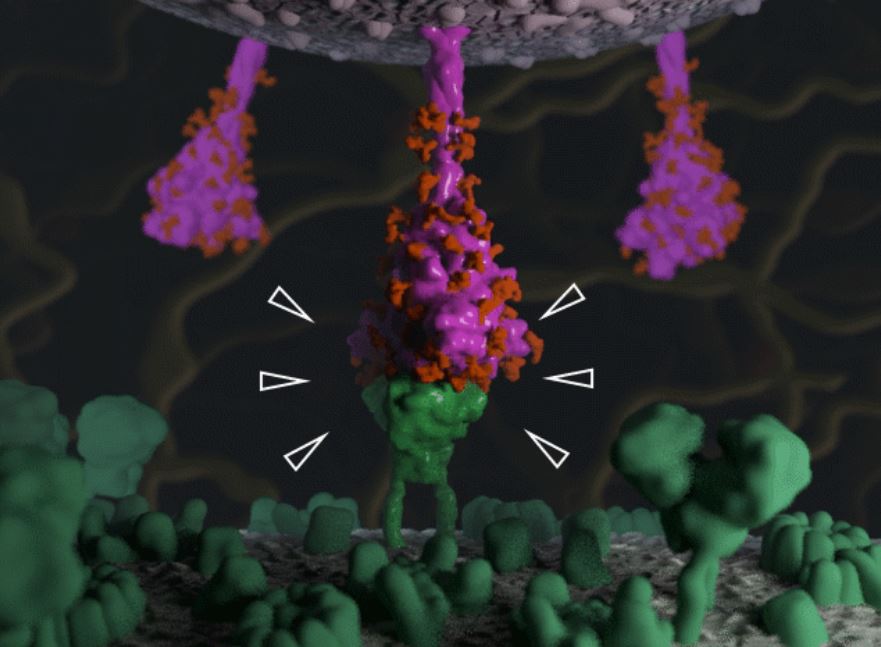What does SARS-CoV-2 look like?
A virus is a set of genetic instructions that takes over a cell, forcing it to make infectious particles that will transmit they viruses instructions to new cells. By understanding how those infectious particles work we can understand how they infect us, and how vaccines can help us to fight back. Since 2019 we have learned a lot about the virus particle that SARS-CoV-2 uses to infect new hosts. You can learn more about the SARS-CoV-2 virus particle and interact with 3D models of it in this article, written by CVR researcher Seema Jasim with 3D models from Ed Hutchinson and Annabel Slater.

The spike of SARS-CoV-2 binds to the surface of a cell in order to infect it. Model developed by Sarah Iannucci in collaboration with Ed Hutchinson
Our researchers have produced a number of other educational resources that can be used to help understand what SARS-CoV-2 looks like. These are suitable for use in a variety of settings – by children and by adults, individually or in group activities. All that you need is an interest in how the invisible world of viruses works (and in some cases a printer).
Have a go at cutting a SARS-CoV-2 Snowflake!
Have a go at colouring in SARS-CoV-2 here

